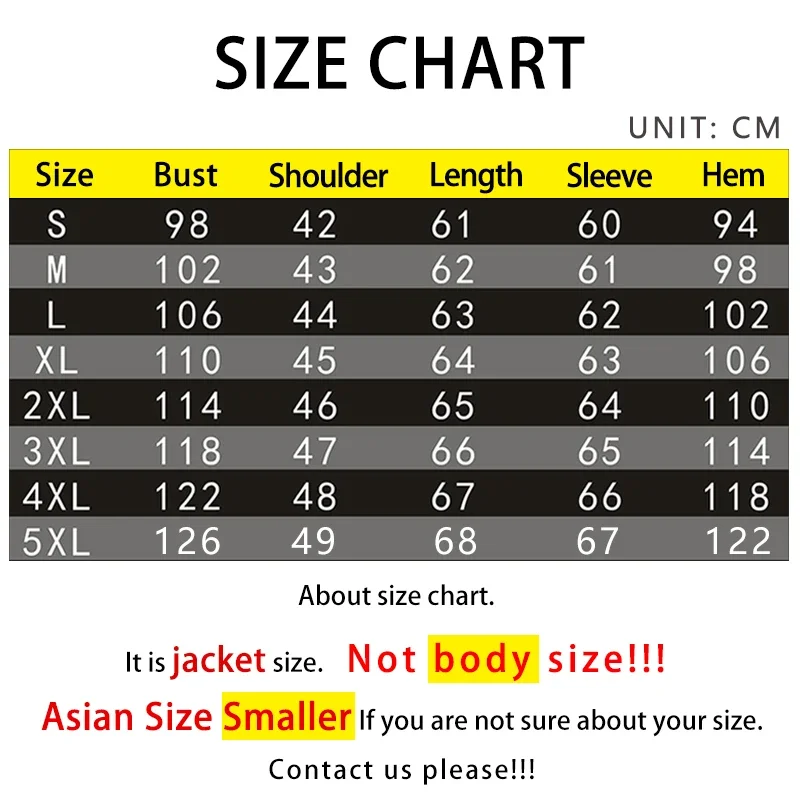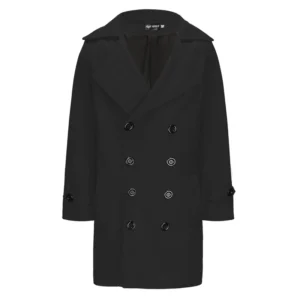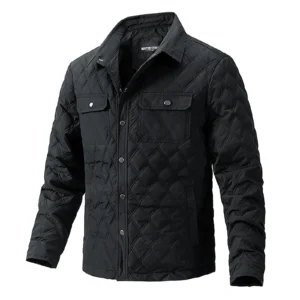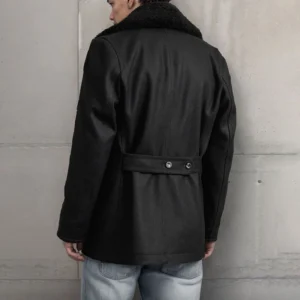The Naval Origins of the Classic Pea Coat
The pea coat stands as one of menswear’s most enduring and recognizable garments, with a rich history deeply rooted in naval tradition. Originally designed for sailors in both the British Royal Navy and later adopted by the US Navy, this iconic coat was created to protect seafarers from harsh elements while at sea.
What defines a true pea coat is its distinctive features: the short length, double-breasted front, broad lapels, and heavy wool construction. These elements weren’t merely stylistic choices—they served crucial functions for sailors. The double-breasted design provided an extra layer of protection against biting winds, while the high collar could be turned up to shield the neck from cold and spray. The shorter length allowed for ease of movement when climbing ship rigging.
The name “pea coat” itself has nautical origins, derived from the Dutch word “pij,” referring to the coarse wool fabric from which these jackets were initially crafted. This robust material was chosen specifically for its water-resistant properties and exceptional warmth.
As this military garment transitioned to civilian wear throughout the 20th century, it retained most of its traditional coat length and distinctive features—a testament to both its functional design and timeless appeal. Today’s traditionally styled pea coats remain remarkably faithful to their naval ancestors, preserving both practical utility and maritime heritage.
Essential Elements of a Traditional Pea Coat
To wear a pea coat in the most traditional manner, it’s important to understand what makes this garment authentic. The following elements define a truly traditional pea coat:
Material Composition
- Heavy Melton Wool: Authentic pea coats use dense, tightly woven wool (typically 20-32 oz weight)
- Natural Fibers: Traditional versions avoid synthetic blends in favor of pure wool for superior warmth and water resistance
- Substantial Hand Feel: The fabric should feel substantial and slightly rigid when new
Traditional Colors
- Navy Blue: The most authentic color, directly connecting to naval heritage
- Black: A classic alternative with formal versatility
- Charcoal Gray: Traditional but slightly less common than navy
Structural Elements
- Double-Breasted Front: The defining feature, typically with 6-8 buttons in a 2×3 or 2×4 arrangement
- Wide Notched Lapels: That can be turned up to protect the neck
- Structured Shoulders: Offering a military-inspired silhouette
- Vertical or Diagonal Hand Warmer Pockets: Positioned for both warmth and function
The classic mens wool pea coat maintains a specific length—traditionally hitting at the hip or upper thigh—which served practical purposes for sailors needing mobility. This mens coat length guide highlights how proper proportions create that distinguished traditional look that has remained largely unchanged for centuries.
Modern interpretations sometimes adjust these elements, but the most traditional styling maintains these core features that balance form and function. Our mens pea coats collection preserves these authentic details while ensuring modern comfort.
Achieving the Perfect Traditional Fit
The hallmark of a traditionally worn pea coat lies in its fit—not too slim, not too loose, but perfectly structured to accommodate layers while maintaining a sharp silhouette. Here’s how to ensure your pea coat fits according to traditional standards:
Shoulders: The seam should align with your natural shoulder edge or extend just slightly beyond. Too narrow, and you’ll restrict movement; too wide, and you’ll lose the military-inspired structure.
Chest and Torso: When buttoned, the coat should allow enough room for a sweater or light jacket underneath without appearing boxy. You should be able to slide your hand between your chest and the buttoned coat with minimal resistance.
Sleeve Length: Traditionally, sleeves hit right at the wrist bone, allowing approximately 1/4 to 1/2 inch of shirt cuff to show when your arms are at rest. This balance maintains both warmth and visual proportion.
Overall Length: A traditional pea coat typically ends at the upper thigh or just below the seat. Finding the perfect coat length for height is essential—too short defeats the protective purpose, while too long contradicts the naval heritage of mobility.
When trying on a pea coat, button it fully and check your range of motion. You should be able to cross your arms comfortably without feeling restricted across the back. The traditional fit allows for layers without appearing oversized when worn with just a shirt.
Common fit mistakes include choosing a coat that’s too fitted (a modern interpretation rather than traditional styling) or selecting one that’s oversized in an attempt to layer heavily underneath. The traditional approach strikes a balance—structured yet accommodating.
Traditional Buttoning and Collar Styles
How you fasten and style your pea coat significantly impacts its traditional appearance. The proper approach honors naval traditions while maintaining functionality.
Buttoning Practices
- Full Buttoning: The most traditional and formal approach is buttoning all buttons except the bottom one. This provides maximum protection while maintaining the coat’s shape.
- Top Buttoning: For milder conditions or a slightly more casual look, fasten only the top two or three buttons, allowing the coat to flare slightly at the bottom.
- Naval Tradition: Sailors would often button all buttons in harsh conditions, reflecting the coat’s functional origins.
The throat latch—that small strap sometimes hidden in the collar—serves a practical purpose. When severe weather strikes, fold the collar up fully and secure the throat latch across for maximum neck protection. This feature distinguishes authentic mens double-breasted pea coat designs.
Collar positioning also follows traditional guidelines:
* Collar Down: The standard position for everyday wear and formal settings
* Collar Up: Traditional for windy or cold conditions, not merely as a fashion statement
* Partially Up: The back of the collar raised slightly higher than the front creates a classic naval silhouette
These details may seem minor, but they reflect the authentic heritage of the garment and ensure you’re wearing it as originally intended—balancing protection with military precision.
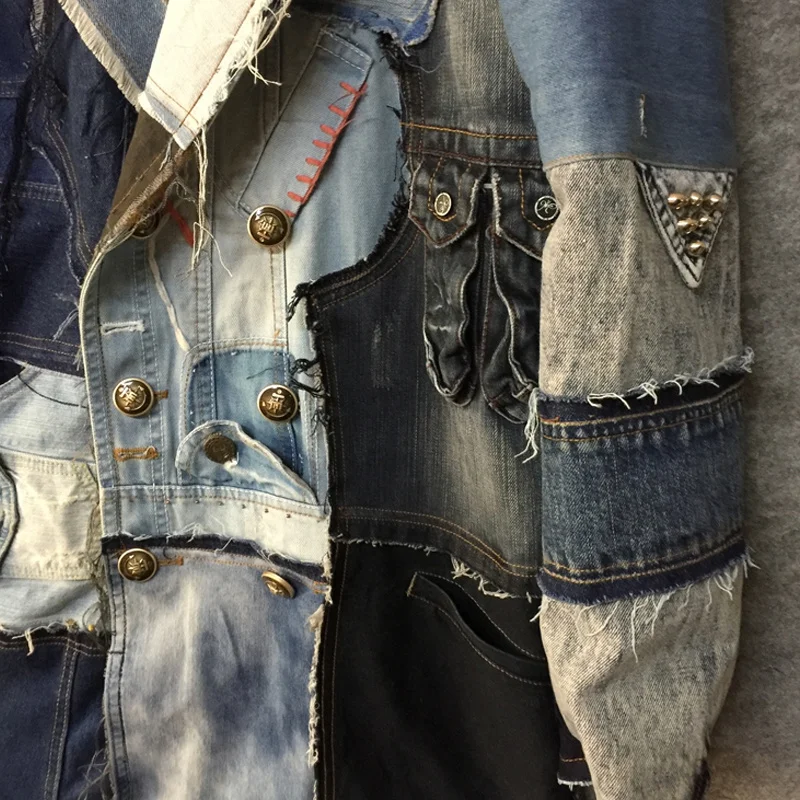
Layering Fundamentals for a Traditional Look
Mastering the art of layering is essential for wearing a pea coat in the traditional manner. The key lies in creating warmth without bulk while maintaining a cohesive aesthetic.
Traditional layering follows these core principles:
- Weight Gradation: Layer from lightest (closest to body) to heaviest (outer layers)
- Material Harmony: Combine natural fibers throughout—wool, cotton, and cashmere create a cohesive traditional look
- Color Coordination: Navy, gray, burgundy, forest green, and ivory form the traditional color palette for layers
For cooler weather, consider this classic progression:
1. Light cotton or merino wool base layer
2. Button-up shirt (Oxford cloth is particularly traditional)
3. Light to medium weight sweater or vest
4. Wool pea coat as the outer layer
The necklines of your layers deserve special attention when styling traditionally. Crew necks, turtlenecks, and button-down collars all work harmoniously with the pea coat’s broad lapels. V-necks can work but should not plunge too deeply, as this creates visual disconnect with the traditional military-inspired aesthetic.
Seasonal adjustments might include:
* Fall/Spring: Lighter cotton layers underneath
* Winter: Heavier wool and cashmere layers for insulation
The beauty of traditional pea coat layering lies in its versatility while maintaining authentic style. These principles create a look that’s both practical and aesthetically connected to the garment’s heritage.
Classic Knitwear Pairings
Knitwear forms the foundation of traditional pea coat styling, creating both warmth and visual interest. These classic sweater styles have been paired with pea coats for generations:
Fisherman/Cable Knit Sweaters: These textured, heavy-gauge sweaters mirror the nautical heritage of the pea coat itself. Cream, navy, or gray versions in 100% wool offer the most authentic pairing.
Turtlenecks and Mock Necks: Perhaps the most iconic pairing, these high-necked sweaters provide complete coverage beneath the pea coat’s broad collar. Navy, black, charcoal, or cream options in medium-weight merino or lambswool maintain tradition.
Crew Neck Sweaters: Simple, clean-lined crew necks in solid colors offer a more understated traditional look. The neckline should sit high enough to be visible above the coat’s top button.
Cardigans: Though less common, substantial shawl-collar cardigans can work traditionally, particularly in nautical settings. Button them fully when worn under a pea coat.
The most traditional fiber choices include pure wool, cashmere, and heavy cotton—synthetic blends being a modern deviation. Weight is crucial; the knitwear should provide warmth without creating excessive bulk.
Color harmonies traditionally favor nautical and neutral palettes: navy, cream, gray, burgundy, and forest green. These create a cohesive look that honors the coat’s maritime history while styling double-breasted coat designs with authentic flair.
Pay special attention to necklines; they should complement, not compete with, the pea coat’s collar. The ideal pairing creates a smooth transition from sweater to coat lapel.
Shirt Selection for Authentic Styling
The shirt you choose to wear beneath your pea coat and knitwear establishes the foundation of traditional styling. Selecting the right collar, fabric, and pattern maintains historical authenticity.
Optimal Collar Styles
The most traditional choices work harmoniously with a pea coat’s substantial lapels:
* Button-down collars: Offering a casual yet put-together look
* Oxford collars: Slightly taller and more substantial
* Spread collars: Creating a more formal appearance when worn directly under the coat
Traditional Fabrics
Authentic pea coat styling favors shirts made from:
* Oxford cloth: Durable with slight texture
* Broadcloth: Smoother and more formal
* Flannel: For additional warmth in winter
* Chambray: A nod to naval workwear
For patterns and colors, tradition dictates restraint. Solid white and light blue remain the most classic choices, while subtle stripes and small checks have historical precedent. Bold patterns generally fall outside traditional styling.
The relationship between short vs long coats affects shirt selection—traditional pea coats hitting at hip length allow more of your shirt to show beneath the coat when unbuttoned. This visibility makes collar choice particularly important.
For formal occasions, consider crisp white shirts with sturdy collars. For casual wear, light blue Oxford button-downs maintain traditional appeal. In both cases, ensure adequate collar height to maintain presence beneath the coat’s substantial collar.
Traditional Trouser Pairings
The lower half of your outfit plays a crucial role in achieving an authentically traditional pea coat look. Historically appropriate trouser selections balance the coat’s substantial upper-body presence.
Traditional Trouser Types
Wool Trousers: The most authentic pairing, particularly in heavier weights like flannel or worsted wool. Flat-front designs in navy, gray, or charcoal maintain the military-inspired aesthetic.
Heavy Cotton Twill: Khaki chinos with a straight leg and medium rise offer a slightly more casual but still traditional option, particularly in naval-adjacent settings.
Corduroy: Medium to wide wale corduroy in darker shades (navy, olive, burgundy) provides texture that complements the coat’s substantial fabric.
Dark Wash Denim: Though not part of the original naval uniform, straight-leg dark indigo denim has become an accepted traditional pairing for casual contexts.
The most important consideration is weight and proportion. Traditional styling avoids lightweight fabrics or extremely slim cuts that create visual imbalance with the substantial coat. Mid to high-rise trousers maintain proportion with the coat’s traditional length.
For trouser break, a slight break over the shoe represents the most traditional approach—neither pooling fabric nor revealing sock when standing. This clean line maintains the military precision associated with wool car coat vs pea coat traditional styling.
Seasonal appropriateness matters as well—heavier wools and corduroys for winter, medium-weight twill for transitional seasons—always maintaining the substantive character that complements the coat’s naval heritage.
Footwear to Complete the Traditional Look
The right footwear anchors your traditional pea coat ensemble, providing both aesthetic completion and practical function. Historical authenticity calls for substantial shoes or boots that balance the coat’s robust presence.
Traditional Boot Options
- Service Boots: Plain toe or cap toe boots with minimal decoration offer military-inspired authenticity
- Cap-Toe Boots: Leather boots with a reinforced toe cap provide a formal yet hardy option
- Work Boots: Particularly in brown leather, these create a rugged traditional look
- Chelsea Boots: A more refined option that maintains traditional appeal in brown or black leather
Classic Shoe Selections
- Brogues: Full or semi-brogues in dark brown or black maintain period-appropriate styling
- Derby Shoes: Open lacing and substantial construction balance the coat’s weight
- Oxfords: For more formal settings, particularly in black or dark brown
Traditional materials favor full-grain leather in dark brown, cordovan, or black—often with Goodyear welt construction for weather resistance and longevity. Avoid highly polished finishes in favor of more substantial, matte or lightly burnished leathers.
Weatherproofing considerations remain true to the coat’s practical origins. Traditional styling embraces boots and shoes that can withstand elements, often with rubber or leather soles featuring some texture for grip in winter conditions.
The silhouette should be substantial without appearing chunky—a clean, classic profile that complements rather than competes with the coat’s strong lines.
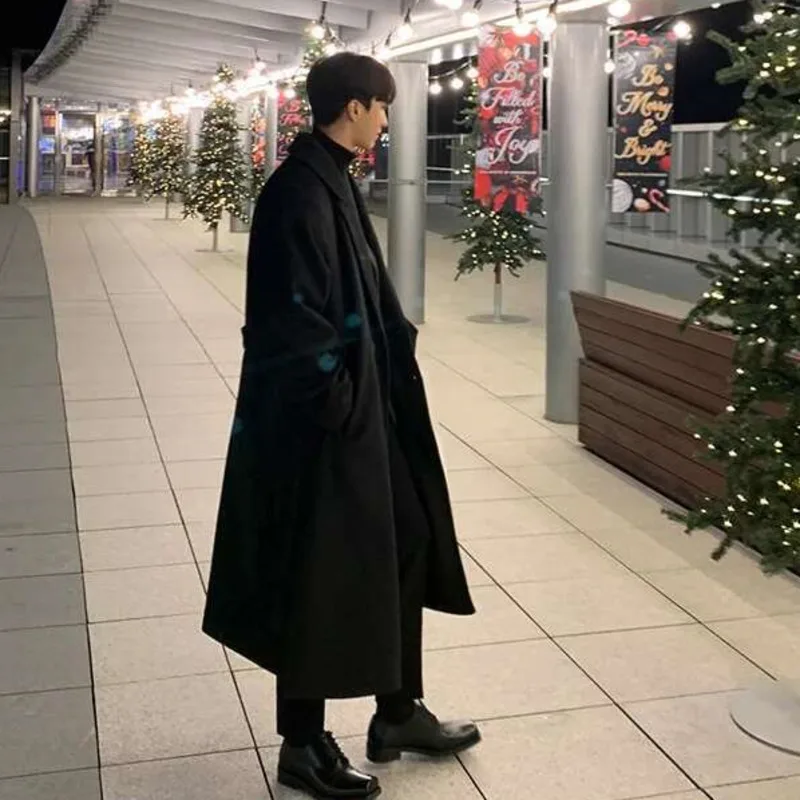
Traditional Accessories: Scarves, Hats, and Gloves
Accessories are not mere afterthoughts when styling a pea coat traditionally—they’re essential components that both enhance the look and serve the practical purpose of protection against the elements.
Scarf Selection and Styling
- Materials: Wool, cashmere, and wool-silk blends in medium weights
- Patterns: Solid colors, subtle herringbone, or classic stripes
- Traditional Colors: Navy, gray, camel, burgundy, or forest green
- Tying Methods: The simple once-around, the Parisian knot, or loosely draped inside the collar
Traditional Hat Options
- Watch Caps/Beanies: Wool or cashmere in navy, black, or charcoal—folded once at the brim
- Flat Caps: Tweed or wool in earth tones or navy
- Fedoras: In more formal settings, particularly in charcoal or navy felt
Glove Considerations
- Leather Gloves: Preferably lined with cashmere or wool in brown or black
- Wool Gloves: In navy, gray, or black for casual settings
- Fit: Should be snug without restricting movement
The traditional approach to accessorizing follows naval and military precision—functional without being flashy. Colors should complement rather than contrast with the coat, maintaining a cohesive palette that respects the mens coat length style guide principles.
When wearing all three accessories together, maintain material harmony—leather gloves pair naturally with leather shoes, while wool accessories create visual cohesion throughout the outfit. The overall effect should appear purposeful yet unfussy, honoring the practical origins of the pea coat.
When and Where to Wear a Traditionally-Styled Pea Coat
The traditionally-styled pea coat occupies a specific place in the menswear spectrum—understanding its appropriate settings ensures you wear it with confidence and authenticity.
The pea coat traditionally bridges casual and semi-formal occasions with remarkable versatility. It pairs beautifully with business casual attire in professional environments that don’t require full suiting. The structured shoulders and clean lines maintain professionalism while offering more character than a standard overcoat.
For social settings, traditionally-styled pea coats shine at outdoor events, dinner outings, and casual gatherings during cooler months. The coat’s heritage makes it particularly appropriate for maritime settings, autumn football games, and winter city exploration.
Weather considerations are equally important. The perfect winter coat length guide places traditional pea coats in the sweet spot for temperatures between 25-45°F (-4 to 7°C). Their substantial wool construction provides significant warmth without the bulk of longer overcoats.
There are situations where other coat styles might better serve: formal black-tie events call for longer overcoats, while extreme cold may require down-filled parkas. Understanding these boundaries helps you leverage the pea coat’s strengths appropriately.
Mens Double Breasted Pea Coat, Mens Wool Blend Coat, Mens Wool Pea Coat
Price range: $136.84 through $157.36 Select options This product has multiple variants. The options may be chosen on the product pageMens Double Breasted Pea Coat, Mens Hooded Winter Coat, Mens Quilted Coat
Price range: $81.00 through $108.48 Select options This product has multiple variants. The options may be chosen on the product pageMens Double Breasted Pea Coat, Mens Wool Blend Coat, Mens Wool Pea Coat
Price range: $139.96 through $157.12 Select options This product has multiple variants. The options may be chosen on the product page
The traditional pea coat occupies a sweet spot in menswear—casual enough for weekend wear yet refined enough for most professional environments. This versatility explains its enduring appeal across generations of style-conscious men.
Care and Maintenance for Traditional Pea Coats
Preserving your pea coat’s traditional character requires proper care that honors both its material composition and structural integrity. Following these guidelines ensures your investment piece will serve you for years while maintaining its authentic appearance.
Start with preventative care by limiting wear during precipitation when possible. When your coat does get wet, allow it to dry naturally away from direct heat sources, which can damage wool fibers. Brush the coat regularly with a soft-bristled clothes brush to remove surface dirt and maintain the nap of the wool.
Cleaning should be minimal and careful. Spot clean minor stains using a damp cloth with mild soap, then blot dry. For comprehensive cleaning, dry cleaning once per season is typically sufficient—more frequent cleaning can break down the wool’s natural oils and structure.
Button maintenance preserves both function and appearance. Traditional anchor buttons may loosen over time; reinforce them at the first sign of movement. Keep a spare set if your coat included them, as authentic replacements can be challenging to source.
Proper storage extends your coat’s life significantly. Always hang your pea coat on a sturdy, broad-shouldered wooden hanger when not in use. Before seasonal storage, ensure the coat is clean and fully dry, then place it in a breathable garment bag—never plastic, which can trap moisture.
Minor repairs should be addressed promptly before they worsen. Small holes or loose seams are easily fixed by a tailor familiar with wool outerwear, preserving both function and appearance.
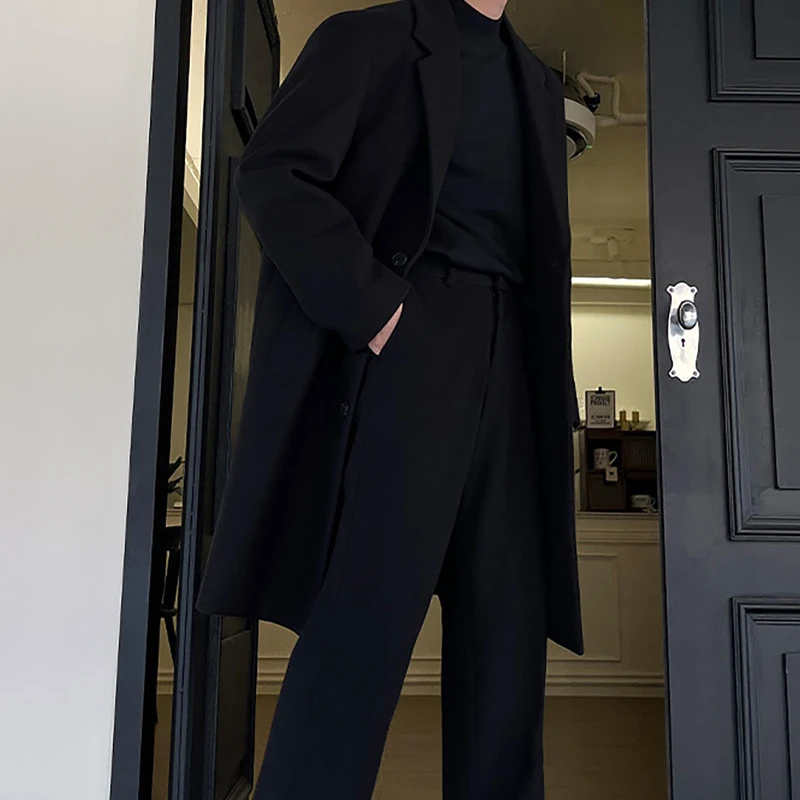
Modern Interpretations vs. Traditional Styling
While traditional pea coat styling follows established naval conventions, modern interpretations have introduced variations that diverge from historical precedent. Understanding these differences helps you make informed styling choices.
Traditional styling features several distinguishing elements: a slightly boxy cut allowing for layers, length hitting at the hip or just below, wider lapels that can be turned up against the elements, and heavyweight wool construction. The color palette remains limited to navy, black, and occasionally charcoal.
Modern interpretations often incorporate:
* Slimmer, more tailored cuts with less allowance for layering
* Shorter lengths that hit at the waist
* Narrower lapels that prioritize appearance over function
* Lighter-weight materials, sometimes incorporating synthetic blends
* Expanded color options including camel, olive, and brighter blues
The traditional approach emphasizes function alongside form—every element serves a purpose beyond mere aesthetics. Modern styling often prioritizes silhouette over practicality, creating a sleeker look that may sacrifice some warmth and weather protection.
Both approaches have their place. Traditional styling connects you to the garment’s rich history and provides maximum functionality in colder weather. Modern interpretations offer contemporary flair and may better complement today’s generally slimmer clothing proportions.
At Metro Cloak, we believe the most successful approach often combines elements of both—respecting traditional construction and materials while making subtle concessions to contemporary fit preferences. This balance creates a timeless garment that honors heritage while remaining relevant for today’s well-dressed man.

